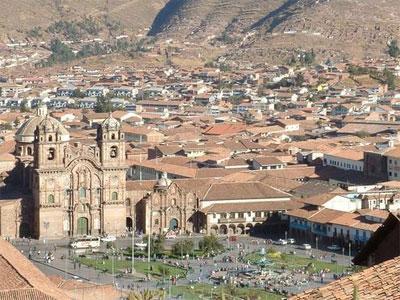Cusco, Cusco, Peru
Suggest Place to Visit
3204
Track to location with GPS |
 |
Inca foundation and epoch
Two Inca legends attribute its founding to its first head of state, a legendary character named Manco Cápac, along with his sister and consort Mama Ocllo. In both it is affirmed that the place was revealed by the sun god (Inti) to the founders after a pilgrimage started south of the Sacred Valley of the Incas
Based on archaeological and anthropological data, the true process of the occupation of Cuzco has been studied. The consensus indicates that, due to the collapse of the kingdom of Tiahuanaco, the migration of its people took place. [Citation needed] This group of about 500 men would have gradually established themselves in the valley of the Huatanay River, a process that would culminate with the foundation of Cuzco. The approximate date is unknown but thanks to vestiges it is agreed that the site where the city is located was already inhabited 3000 years ago. However, considering only its location as the capital of the Inca Empire (mid-13th century), Cuzco appears as the oldest inhabited city in all of America.
It was the capital and seat of government of the Kingdom of the Incas and it continued to be at the beginning of the imperial era, becoming the most important city in the Andes and South America. This centralism gave rise to it and it became the main cultural focus and axis of religious worship.
The ruler Pachacútec is credited with having made Cuzco a spiritual and political center. Pachacútec came to power in 1438, and he and his son Túpac Yupanqui spent five decades organizing and conciliating the different tribal groups under their rule, including the Lupaca and the Colla. During the period of Pachacútec and Túpac Yupanqui, the dominion of Cuzco reached as far as Quito, to the north, and to the Maule River, to the south, culturally integrated into the inhabitants of 4,500 km of mountain ranges.
The original design of the city is also believed to be the work of Pachacútec. The plan of ancient Cuzco has the shape of a puma outlined, with the central Haucaypata square in the position that the animal's chest would occupy. The cat's head would be located on the hill where the Sacsayhuamán fortress is.
The Incas organized their administrative division so that the limits of the four regions of the empire coincided in the main square of Cuzco.
Spanish foundation and viceregal era
The Spanish conquerors knew from their arrival in what is now Peruvian territory that their goal was to take the city of Cuzco, capital of the empire.
After capturing the Inca Atahualpa in Cajamarca, they began their march to Cuzco. Along the way they founded some cities as a link between the capital of the Empire and the pioneering city of San Miguel de Tangarará. On November 15, 1533, Francisco Pizarro founded the city of Cuzco in the Spanish way, establishing as Plaza de Armas the location that still maintains the modern city and that was also the main square during the Inca Empire and that was surrounded by palaces. who were the Inca sovereigns. Construction of the cathedral began on the site facing north. Pizarro granted Cuzco the name of Cuzco, Ciudad Noble y Grande on March 23, 1534.
General view of the city. Old engraving.
Overlapping architectures of the Coricancha, the Santo Domingo Convent and the current era.
Chapel of the Sagrada Familia, next to the Cathedral. This building formerly belonged to the Inquisition and in front of it the public executions of the condemned took place. The survivors of the Inca Empire fought during the first years of the colony. In 1536 Manco Inca began his confrontations and created the Vilcabamba dynasty of the Incas. This dynasty met its end in 1572 when the last Inca Túpac Amaru I was defeated, captured and beheaded.
The city became an important commercial and cultural center of the central Andes since it was located on the routes between Lima and Buenos Aires. However, the viceregal administration preferred the location of Lima (founded two years after Cuzco in 1535) and mainly its proximity to the natural port of what would become Callao to establish the head of its dominions in South America. The city is already mentioned in the first known map of Peru.
Cuzco was taken as the head of the viceregal administration in the south of the country, being in its beginnings the most important location to the detriment of the recently founded cities of Arequipa or Moquegua. Its population was mainly indigenous people belonging to the Inca aristocracy who were respected some of their privileges and privileges. A good number of Spaniards also settled. At that time, the process of cultural miscegenation that today marks the city began.
Urban development was interrupted by several earthquakes that destroyed the city on more than one occasion. In 1650 a violent earthquake destroyed almost all the colonial buildings. During this earthquake, the effigy of the Lord of the Earthquakes gained great importance, which is still carried out annually in procession today.
In 1780, the city of Cuzco was convulsed by the movement started by the chief José Gabriel Condorcanqui, Túpac Amaru II, who rose up against the Spanish administration. His uprising was quelled after several months of fighting in which he put in check the viceregal authorities stationed in Cuzco. Túpac Amaru was defeated, taken prisoner and executed along with his entire family in the Plaza de Armas in Cuzco. Even today the chapel that served as the prison for the hero remains on the side of the Church of the Society of Jesus. This movement spread rapidly throughout the Andes and marked the beginning of the South American emancipatory process.
In 1814 another uprising against the viceregal administration took place in Cuzco. Brigadier Mateo Pumacahua, a mestizo from Cusco who had faced the forces of Túpac Amaru II, started the Cuzco Rebellion together with the Angulo brothers to achieve the independence of Peru. This uprising was also put down.
Republican era
Peru declared its independence in 1821 and the city of Cuzco maintained its importance within the political-administrative organization of the country. In effect, the department of Cuzco was created, which included even the Amazonian territories up to the border with Brazil. The city was the capital of said department and the most important city in the south east Andean region.
Starting in the 20th century, the city began urban development at a higher rate than that experienced up to that time. The city spread to the neighboring districts of Santiago and Wanchaq.
In 1911, Hiram Bingham's expedition left the city to explore the Inca ruins of Machu Picchu.
Decorations [edit] In 1933 the Congress of Americanists held in the city of La Plata, Argentina declared the city as ´´Historical Capital of Peru´´
Cuzco (southern Quechua: Qusqu, Qosqo, pronounced [e 712; qo e 797; s.qo]), or Cusco (recent official spelling), is a city in southeastern Peru located on the eastern slope of the Cordillera de los Andes, in the basin of the Huatanay River, a tributary of the Vilcanota. It is the capital of the Department of Cuzco and in addition, it is declared in the Peruvian constitution as the historical capital of the country.
Formerly it was the capital of the Inca Empire and one of the most important cities of the Viceroyalty of Peru. Declared a World Heritage Site in 1983 by Unesco, it is usually called, due to the large number of monuments it has, as the ´´Rome of America´´; It is currently the largest tourist destination in Peru, with an annual influx of close to one million annual visitors in 2008.
It has a population of approximately 390 thousand inhabitants, which places it among the most populated cities in the country.
The city of Cuzco has received several honorary titles. These are:
Cuzco, first city and first vote of all the cities and towns of Nueva Castilla.
Granted in Madrid by Royal Decree of Carlos V, April 24, 1540
The very famous, very noble, loyal and most faithful city of Cuzco, the most important and head of the kingdoms of Peru.
Granted in Madrid by Royal Decree of Carlos V on July 19, 1540.
Cuzco, Archaeological Capital of America.
Awarded at the XXV International Congress of Americanists held in La Plata, Argentina in 1933. This title was endorsed by the Congress of the Republic of Peru through Law No. 7688 of January 23, 1933.
Cuzco, Cultural Heritage of the World.
Awarded by the Seventh Convention of Mayors of the Great Cities of the World, meeting in Milan, Italy on April 19, 1978.
Cuzco, Cultural Heritage of Humanity
Awarded by Unesco in Paris, France on December 9, 1983.
Cuzco, cultural heritage of the nation.
Granted by Law No. 23765 of December 30, 1983. Article 3 of this Law designates the City of Cuzco as the Tourist Capital of Peru.
Cuzco, Historical Capital of Peru.
Awarded by article 49 of the 1993 Political Constitution of Peru.
Cuzco, Historic Capital of Latin America
Awarded by the Latin American Congress of Aldermen and Councilors, in the city of Cuzco, in the month of November 2001.
Cuzco, American Capital of Culture
Awarded by the American Capital Organization of Culture in 2007.
Due to its antiquity and significance, the city center preserves many buildings, squares and streets from pre-Columbian times as well as colonial constructions, which led to its being declared a World Heritage Site in 1983 by Unesco. Among the main sites of interest in the city are:
San Blas neighborhood
This neighborhood where artisans, workshops and craft shops are concentrated, is one of the most picturesque places in the city. Its streets are steep and narrow with old houses built by the Spanish on important Inca foundations. It has an attractive square and the oldest parish in Cuzco, built in 1563, which has a carved wooden pulpit considered the highest expression of the Cusco colonial era.
The Quechua name of this neighborhood is Toq'ocachi, which means the Hollow of the Salt.
Hatun Rumiyuq Street [edit] This is the most visited by tourists. In Hatun Rumiyoq street (´´De la Roca Mayor´´) was the Inca Roca palace, which currently belongs to the Archbishop's Palace.
In this street that goes from the Plaza de Armas to the San Blas neighborhood, you can see the stone of the twelve angles.
Convent and Church of La Merced
Due to the earthquakes in this city, the Convent and Church of La Merced have been rebuilt more than once. Originally dating from the 16th century, its Baroque Renaissance cloisters are particularly noteworthy, as are the choir stalls, colonial paintings and wood carvings.
You can also see a monstrance of gold and precious stones weighing 22 kilos and 130 centimeters high.
Cuzco Cathedral
In reality, the first cathedral in Cuzco is the Iglesia del Triunfo, built in 1539 on the basis of the Viracocha Inca palace. At present, this church is an auxiliary chapel of the Cathedral.
Between the years 1560 and 1664 the cathedral basilica of this city was built. For this, stone was used as the main material, extracted from nearby quarries and in part red granite blocks were reused from the fortress known as Sacsayhuamán.
This great cathedral, with a Renaissance plan, presents late-Gothic, Baroque and Plateresque interiors, it has one of the most outstanding examples of colonial goldsmithing. Also important are its carved wooden altars.
Since in this city painting on canvases was developed in the so-called ´´Cusqueña Painting School´´, it is precisely in the cathedral that important samples of local artists of the time can be observed. It is the seat of the Archdiocese of Cuzco.
Main Square
Plaza de Armas del Cuzco ´´Plaza del guerrero´´ was called in the time of the Incas. This square has been the scene of several important events in the history of this city, such as the proclamation by Francisco Pizarro of the conquest of Cuzco.
Likewise, the Plaza de Armas was the scene of the death of Túpac Amaru II, considered the indigenous leader of the resistance.
The Spanish built a stone arcade in the square, with Cuzco workmanship, which lasts to this day. Here are the cathedral and the church of La Compañía.
Church of the company
This church, whose construction was started by the Jesuits in 1576 on the foundations of the Amarucancha or Inca Huayna Cápac palace, is considered one of the best examples of the colonial baroque style of the American continent.
Its façade is made of carved stone, as can be seen in the photo, and its main altar is made of carved wood and covered with gold leaf. It was built on an underground chapel. Additionally, two chapels stand out, that of Lourdes and the old oratory of San Ignacio de Loyola.
This temple has a valuable collection of colonial canvases from the Cusco School.
Coricancha
The Coricancha (Quri Kancha) was the most important sanctuary dedicated to the Sun god in the time of the Inca Empire. This temple was called the site of gold since all its walls had been covered with gold sheets by the Incas.
Taking this structure as a base, the Renaissance-style Convent of Santo Domingo was built here. The building, with a single baroque tower, surpasses the other buildings in this city in height.
Inside there is an important collection of paintings from the Cusco School of Painting.
Symbols
Stone of the twelve angles in Hatum Rumiyuq Street. Like several cities in the world and Peruvians, Cuzco has three officially established symbols, its flag, the shield and the anthem. The use of these symbols occurs especially in the month of June since on June 24, the day on which the Inca festival of Inti Raymi is commemorated, the day of the city is also celebrated.
Regarding the Shield, there is currently a duplicity of symbols since, although the city has the Carlist shield with more than 450 years old, in recent years the Provincial Municipality of Cuzco has preferred the use of the Sun of Echenique as a shield from Cuzco because its characteristics refer more to the Inca past of the city than to the colonial past. This shield is used as a security seal for the Nuevo Sol banknotes that circulate today.
Comments
We don´t have yet any comments about:
Cusco, ´´Historical capital of Peru´´
Cusco, ´´Historical capital of Peru´´
Be the first to leave a comment as it is very important to inform other people
Outros locais a visitar
Within a radius of 20 km from:Cusco, ´´Historical capital of Peru´´
Cusilluchayoc o Templo de los Monos |
| 0,2 Km |
 |
San Blas ´´distrito dos Artistas´´, |
| 0,3 Km |
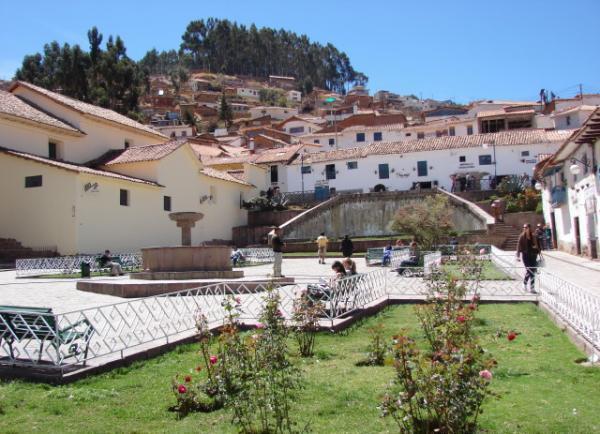 |
Qenqo |
| 0,4 Km |
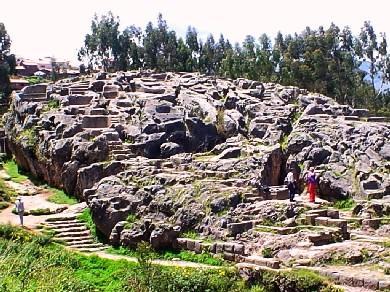 |
Rua Hatun Rumiyuq |
| 1,1 Km |
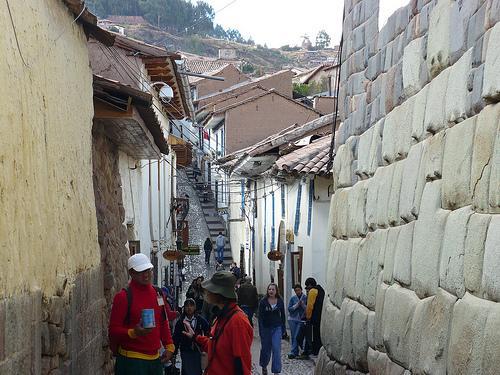 |
Catedral de Cusco |
| 1,2 Km |
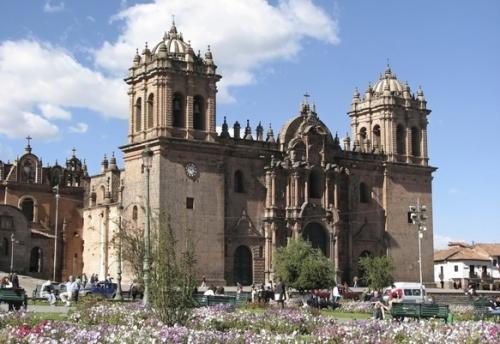 |
Templo e Convento de Santa Catalina |
| 1,3 Km |
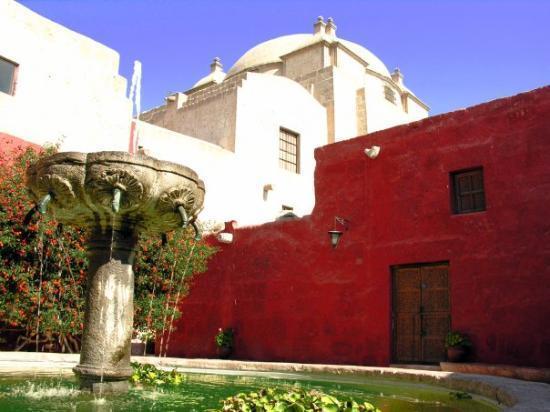 |
Praça das Armas de Cusco |
| 1,3 Km |
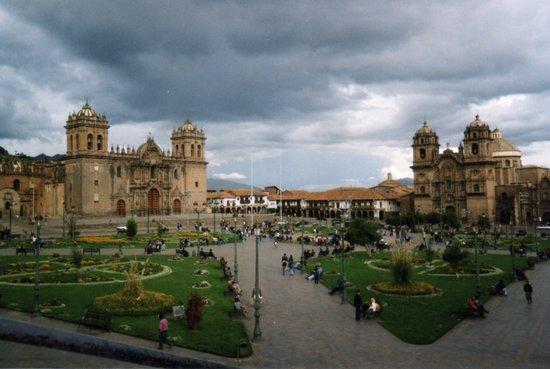 |
Igreja da Companhia de Jesus |
| 1,4 Km |
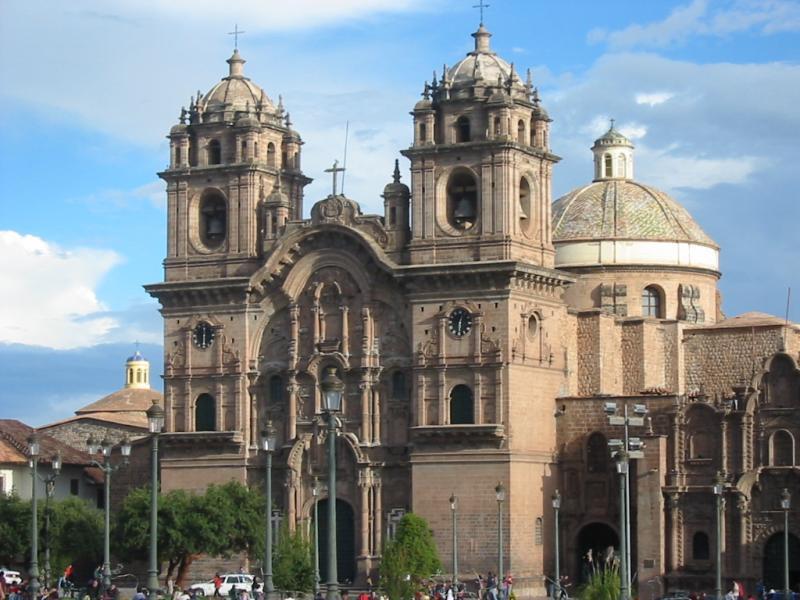 |
Parque Arqueológico de Sacsayhuaman |
| 1,4 Km |
 |
Templo de Koricancha |
| 1,6 Km |
 |
Templo da Merced de Cuzco |
| 1,6 Km |
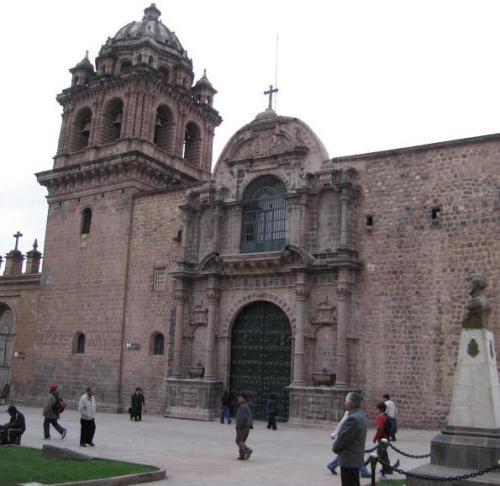 |
Pukapukara (fortaleza Colorada) |
| 3,1 Km |
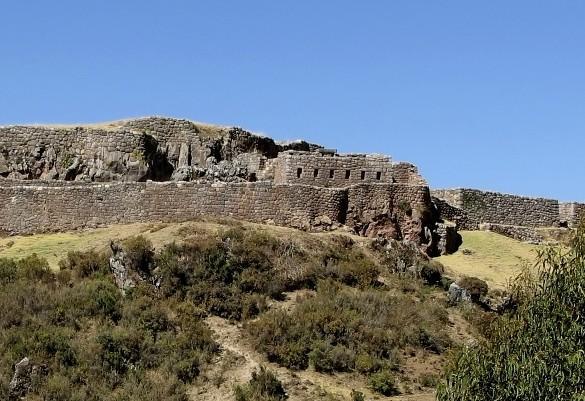 |
Parque Tematico de Camélidos Sudamericanos Awana kancha |
| 12,6 Km |
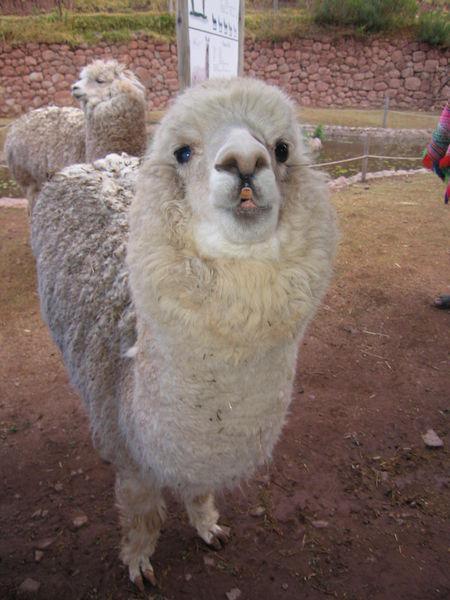 |
Cidade de Pisac |
| 15,1 Km |
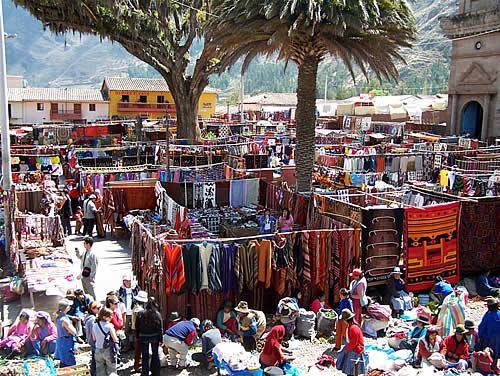 |
Chinchero, Pueblo del Arcoiris |
| 16,0 Km |
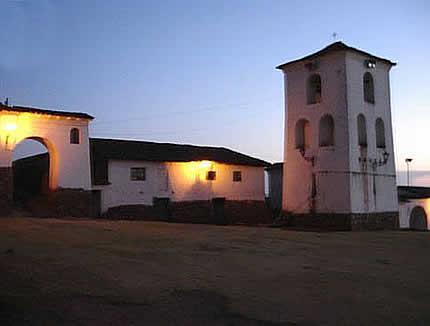 |
Tambomachay |
| 16,8 Km |
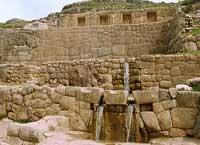 |
Tipon |
| 18,6 Km |
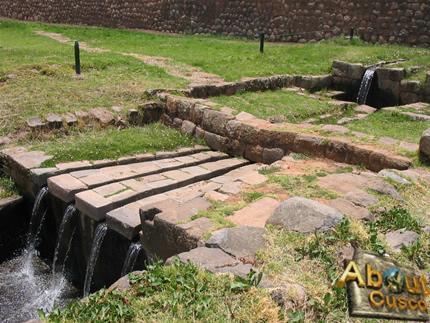 |
Hotel reservation near Cusco, ´´Historical capital of Peru´´ within a radius of 20 km
Why to book with ROTAS TURISTICAS
The best prices
Our partnerships with the world´s largest operators offer research on the best market prices.
More options
At Rotas Turisticos you can book the hotel, buy the air ticket, book the transfer from the airport to the hotel and vice versa, book the local excursions, rent the car, take travel insurance and consult the places to visit and where to go.
Holiday Tips & Destinations
Hundreds of holiday destinations with all the options that allow you to easily choose the destination that best suits your dream vacation.
ROTAS TURISTICAS
Links


